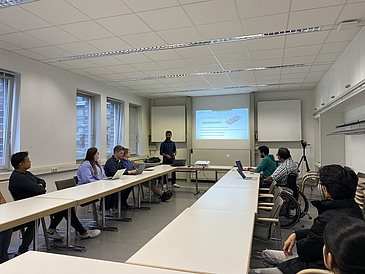Akhil Simha Neela successfully defended his research on modeling and evaluating the performance of a distributed adaptive algorithm for generating collective perception messages (CPM) in VANETs to reduce channel load in communications. He used the Artery model framework to implement his extensions and to evaluate the performance, which included the use of the CN+ and the LuST trace. The abstract of her work is given below.
We congratulate him on his success and wish him the best in the future.
Abstract
In recent years, the growing number of vehicles on the road has led to a significant trend toward increasing the autonomy of vehicles. This surge in vehicle autonomy has made ensuring safety and minimizing traffic congestion a top priority. In response to these challenges, Collective Perception (CP) services have been introduced within Vehicular ad-hoc networks (VANETs). CP services enhance safety by enabling vehicles to be aware of their surroundings, detecting both Vehicle-to-Everything (V2X) and non-V2X-enabled entities. Vehicles detect nearby objects and generate Cooperative Perception Messages (CPM), which are exchanged with other vehicles, creating a collective awareness of the environment. This collective awareness empowers vehicles to make informed decisions based on various scenarios.
The proposed ETSI CPM Standard limits the message generation between 1 Hz and 10 Hz to avoid channel overload within this bandwidth. This research focuses on developing algorithms to determine the optimal generation frequency for CPMs generated by individual vehicles. The primary objective is to enable vehicles to autonomously determine the best transmission frequency, facilitating distributed adaptive message generation. Various mechanisms have been implemented using the Artery V2X Framework Simulation Model to achieve this goal.
This research explores the critical intersection of autonomous vehicles, collective perception, and adaptive message generation, aiming to enhance safety and efficiency in modern road networks.


